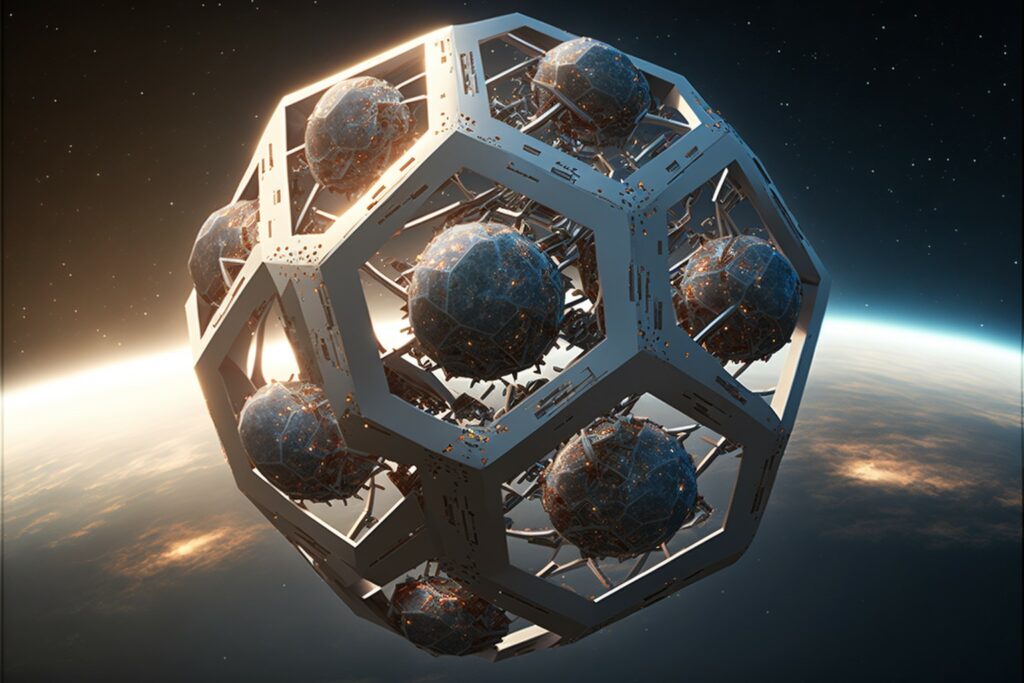I was first introduced to the term VUCA by my ex-colleague, Julian TROIAN, a leader in coaching who steers the talent management practice. This revelation came during a particularly challenging phase for us, mirroring the struggles of many other companies. We found ourselves navigating the intricacies of the COVID lockdown while simultaneously undergoing a significant shift in the corporate way of working. Our project portfolio was expanding, driven by the rapid pace of transformations, and we felt the weight of increasing regulatory pressures. But we recognized that these challenges were not ours alone. Then, significant disturbances emerged: the Eastern Europe conflict and a surge in inflation, to name a few.
Moreover, the world stood on the brink of simultaneous technological revolutions. Innovations like blockchain and the nascent promise of the metaverse hinted at new horizons. Yet, it was the seismic shifts brought on by Generative Artificial Intelligence that seemed most profound.
VUCA is an acronym encapsulating the themes of vulnerability, uncertainty, complexity, and ambiguity. Herbert Barber coined the term in 1992 based on the book “Leaders: The Strategies for Taking Charge”. I believe many can relate to these elements, sensing their presence in both professional settings—perhaps during office hours—and in personal moments with family.
Life, in its essence, might be described by this very term. We all traverse peaks and lows, facing situations of heightened complexity or vulnerability. The challenge is not just to navigate these periods but to foster strength and ingenuity, arming ourselves for future obstacles.
I consider myself fortunate to have garnered knowledge in enterprise architecture—a domain that inherently equips any organization, product, or service with resilience, making adaptability part of its very DNA.
In the subsequent sections, I explore strategies for developing VUCA antibodies.
From Vulnerability to Resilience: Building an Unshakable Future
Rather than getting bogged down by vulnerabilities, it’s about harnessing resilience. Robustness is the key to building thick layers of protection, ensuring longevity in our ventures. By deliberately creating anti-fragile mechanisms, we’re better prepared for tough times. This resilience doesn’t just happen; it’s constructed. Architects weave it into their designs across various realms:
- Information Systems: These are designed to be failure resistant. Potential mistakes and erratic behaviors are predicted and integrated into the system as possible anomalies. In such events, responsible teams must give clear procedures to users, operators, and administrators to restore the system to its standard operational mode.
- Data Management: From acquisition and processing to analytics and visualization, there’s complete control over the data flowing into the system. This range from a service request made over the phone, a command initiated by an AI, or even a tweet that prompts the system to respond.
- Security: Safeguarding the system against potential hacks is crucial. Additionally, it’s vital to design the system in a way that vulnerabilities don’t open doors for intrusions. Depending on the chosen architectural delivery method, this can be addressed proactively or reactively.
- Infrastructure: The foundational physical infrastructure, tailored to the system’s needs, must be aptly dimensioned. At times, specialized hardware like GPU-driven servers, or programmable network devices might be essential to cater to particular needs during both the development and operational phases.
- Organization: People, integral to the corporate ecosystem, influence the system’s effectiveness. Their actions and behaviors enhance system efficiency, especially when elements like trust, making amends for failures, regular maintenance, and adaptability to change are activated.
All these aspects aren’t mere byproducts; they’re deliberately designed system features.
From Uncertainty to Probable Planning: Navigating with Confidence Through Uncertain Waters
Predicting the future is beyond anyone’s capability, but architects can narrow down scenarios to the most probable outcomes. Through modeling techniques like system design, trend analysis, scenario planning, and causal loops, they can forecast with a higher degree of accuracy. However, the planning phase isn’t without challenges:
- Resources: There are times when constraints in time, finances, skills, and materials can make a proposed solution unfeasible. Recognizing this early on is vital.
- Leadership: A wavering decision-maker, filled with doubt, can be a significant impediment. This is a leadership challenge that needs addressing at the top. In such a situation, the architect must highlight the unstable matter with benevolence and candor.
- Team: The implementation is only as good as the team behind it. If team members don’t possess the necessary skills or their abilities don’t align with the mission’s complexity, especially when executing multiple plans simultaneously, it will compromise the execution of the plan.
- Expertise: last but not least, the architect’s seniority and the time allocated to address your transformation’s VUCA elements also play a critical role.
From Complexity to Engineering: A Blueprint for Simplification
Sometimes, complexity arises from perception, misunderstanding, or underestimating a situation – often, it’s a mix of these elements.
Imagine you have three wooden chairs, and you wish to create a sofa. Is it even possible? Fortunately, Ikea offers a DIY toolbox that can help you realize this vision. When you describe your idea to the store specialist, she confidently directs you to aisles A8 to C12 for the necessary components. At first, you feel relief. But soon, doubts about your abilities confront you. Even with your experience in crafting wooden furniture, you’re unsure about the mechanisms you’ll need, the type of finish to choose, the tools required for precise cuts, and the best materials for durability. Are these materials environmentally friendly? This confusion and uncertainty are akin to experiencing VUCA.
The architect’s role is to first understand the complexity, determine the facts, and uncover what’s unknown, converting it to known information. Then, the challenge or problem is segmented into manageable pieces. I refer to this process as “Undesign.” The goal of undesigning is to get a clear and detailed view of the end goal by atomizing the current state, structure, and behavior. This is achieved through methods like decomposition, deconstruction, alternate system modeling, and sometimes reverse engineering. Subsequently, the architect uncovers a path to transform and assemble these components.
The essence of engineering is to assemble these components using identifiable, simple building blocks. These blocks are selected, modified, added, and connected in a logical order, ensuring the right materials, technologies, and tools are used. People with the right skills can then efficiently bring the project to life, ensuring it’s as seamless and enjoyable as possible. Even the user’s psychological experience matters!
In summary, what seems intricate and complex can be distilled into simpler, manageable parts.
From Ambiguity to Lucidity: Transitioning from Wishful Thinking to Tangible Outcomes
Architects don’t just exist in the present; they shape the future. Their responsibilities lie in meticulously designing and planning changes that will inevitably impact an organization’s products or services. Any vision, no matter how abstract, becomes initially tangible through their work. They ensure this by providing explicit construction instructions, detailed models of the final product, and ensuring the requisite resources and skills are in place. By doing so, architects play a pivotal role in turning ambiguity into precision.
Moreover, it’s the architect’s responsibility to align ambitions with the resources available, ensuring that goals are realistically achievable.
In wrapping up, VUCA can be perceived as a daunting challenge. But, with the right leaders onboard, RePEL becomes a natural response to unfriendly environments and stressful times. They hold the key to transforming volatile situations into clear, well-defined future pathways, keeping the enterprise entropy under control.






